How to Say No to Your Child in a Positive Way – 10 Things You Can Say Instead
Here’s how to say no to your child in a positive way: 10 things you can say instead.
“Maaamaaa!” my 3-year old whined as he entered the kitchen where I prepped vegetables for dinner. “Nick won’t play with me, and Ace pushed me, and Levi said I’m a baby, and my leg hurts!” Nothing seemed to go right in his little world, and whining was naturally his way of telling me about his woes.
I’ve talked to my kids about whining, but sometimes simply talking about an issue isn’t enough to correct it. I decided to try something else. I turned to my little boy, tapped on my ear with my finger and said, “My ears don’t understand whining.”
“Maaamaaa, my brothers won’t play with meee!” He whined even louder. I wanted to help him, after all, he did come to me to ask for my help, but I needed to teach him that whining is not a good way of getting a message across.
I tapped on my ear again and shrugged my shoulders. He whined some more. I looked at him, tapped on my ear a third time, and turned around to chop a carrot. He went quiet for a minute. I turned to look at him again and saw him quietly standing beside me, watching the knife go up and down, up and down as the small carrot pieces spread around on the cutting board.
“Can I help you, mama?” He snuffled. I smiled, “Sure, you can wash the potatoes I peeled.”
Why parents shoudn’t say no often
Saying “no”, “don’t”, and “stop” is a natural reaction adults have to a child’s negative behavior. But the word “no” elicits negative emotions. When was the last time your child happily agreed when you told him he can’t have or do something he wants? This is why it’s a good idea to look into how to say no to your child in a positive way as an alternative to negative words.
When I’ve asked my whining little boy to stop whining or to leave the room and come back when he can talk calmly, it upset him even more. Taking a creative approach helped him to calm down, and, distracted by something else, he forgot about his worries.
Kids get immune to the word no very quickly, simply because they hear it so often. They begin overusing it themselves and saying it to others more often than needed.
“Don’t touch my toy!”
“You can’t play with that!”
“Stop climbing on my bed!”
And that’s how the sibling wars start.
To teach your kids to express what they’re thinking and feeling, use different, positive words and show them by example how to speak to others. When kids hear you find alternative ways of saying no, they’ll be more likely to use descriptive words, too, instead of a short no, or other strong negative words.
For this reason and many others, don’t say no to your children often. But when you do say no, stick to your word and do as you said. This is important in earning your children’s respect. They have to know that if you say something, you’ll stick to your word. And if you said no, that means no, and no matter how much they whine and plead, you won’t give in. After a while, they’ll know that whining and pleading is useless and will do it less and less often.
How to say no to your child in a positive way – 10 things you can say instead
So how do we say no without actually saying no? When you need to say no to your child, reframe and rephrase your answer. Here are 10 ways to say no with a positive spin.
1. That’s a great idea. We’ll do it after you finish dinner
When your child is asking if he can go play outside at dinner time, the natural reaction is “No”, “You can’t,” and if he repeats his request, you might return with “Don’t ask me again”. It might be better received if you follow it with an explanation, like “No, because we’re about to eat dinner.” But there is a better, more positive way of saying no. “That’s a great idea, sweetheart, we’ll go outside after dinner.” He will feel important because his idea wasn’t rejected, and might even be more eager to eat his dinner.
2. Can you tell me why you want it?
If your son is asking for a toy, instead of saying no, open up a conversation. Ask him why he wants the toy, what he would do with it, and how he got the idea for the toy to begin with. Then, follow with the next phrase.
3. Let’s put it on your wishlist
This is a win-win. When your child wants something he can’t have, have him write it down, or write it for him if he doesn’t write yet, and put it somewhere safe. When he has another idea, add it to the list. This way he won’t feel rejected, and you will have a list of gift ideas when his birthday or Christmas rolls around.
This works not only for toys but for experiences, too. If your son is asking to go fishing, or your daughter wants a playdate with her friend, put it on a wish list, and you’ll have a few activity ideas in the bank for later.
4. I feel the same way
When your daughter asks to go outside but it’s raining, tell her you want to go outside too. Then give her what she wants in imagination. Tell her a story of the both of you running through a field of wildflowers, chasing butterflies as the sun gently kisses your cheeks and shoulders. Tell her an imaginary story of how you’re enjoying the exact thing she wants – playing outside. Kids love stories, so make yours as detailed as possible, and your little girl will be soothed with wonder.
5. Do you want one now or two later?
If your child is asking to watch a cartoon and it’s time to get ready for a nap, ask him if he wants to watch one now, or if he takes a nap right now, he can watch two after he wakes up. It works for sweet treats, too. If he wants a mini Twix, offer to wait until after dinner, and he can have two then.
6. Let’s talk about it after we get home
Sometimes you have to take a raincheck and give an answer later. This works best with school-age kids but may work with preschoolers, too. This will give you time to think about your answer. When you get home, don’t give in to the temptation of not actually talking about it, because your child needs to trust your word and know that you’ll do as you said.
7. Do you think it’s a good idea to do this right now?
Kids know a lot. When we repeat rules and reasons for those rules to them over and over, it may seem like our words fall on deaf ears, but they do hear us, even if they act like they don’t. Kids know why they shouldn’t eat candy at bedtime, why they shouldn’t jump on the bed with the shoes on, and why they shouldn’t play outside after dark. Ask them if they think it’s a good idea to have or do what they want, and they will either give you an answer or if they’re older, they might let the idea go after they realize that it’s not the best thing to do right now.
If you feel they don’t know the answer to your question, offer an explanation. “You want to kick the ball, but if we do that inside, things can break.” Then, follow with the next phrase.
8. Let’s do this instead
We have a little family rule that I teach older siblings when a baby is in the house. When you want something the baby is holding, offer something else in return. If it’s enticing, the little one will pick up what the older sibling is offering, and will put down the toy she was holding to begin with. This approach works in situations where you need to say no in a gentle way, too. When you tell your child that kicking the ball inside might result in broken things, you’re taking away his idea of fun. Offer something else in return. “How about going outside to play?” or, “Let’s roll the ball to each other on the floor.”
9. Tell me the rule, please
If you have a rule about outdoor boundaries when playing outside and your child gets close to the road, ask him to tell you the rule about playing outside. If needed, help him with a leading question, “Where do we play when we’re outside?”
10. Let’s think of what we can do to make it happen
This works when your child wants something that will require more funds or time on your part. If your son wants a hoverboard, or to learn to ride a horse, sit down with him and make a plan of action. What can he do to earn some money to put towards the thing he wants? Will you allow him to do “extra” chores for payment? Is he old enough to cut a neighbor’s lawn? Or pick up sticks after a windy night? Will you be willing to cover half the cost if he works hard and saves the other half? Talk through all the details, and help your child get what he wants by working for it.
When to say no to kids
I’m not suggesting you give up on the word “no” altogether. It’s not practical. Instead, leave “no”, “don’t”, “can’t”, and “stop” for the things that really matter. If there’s possible danger, it’s absolutely okay to say “Don’t touch the stove, it’s hot!”, “No throwing rocks or someone will get hurt!” Or “STOP!” when your little person takes off in the parking lot. Kids need to know the meaning of these strong words for situations that include danger, and that’s why they can’t be overused.
Related posts:


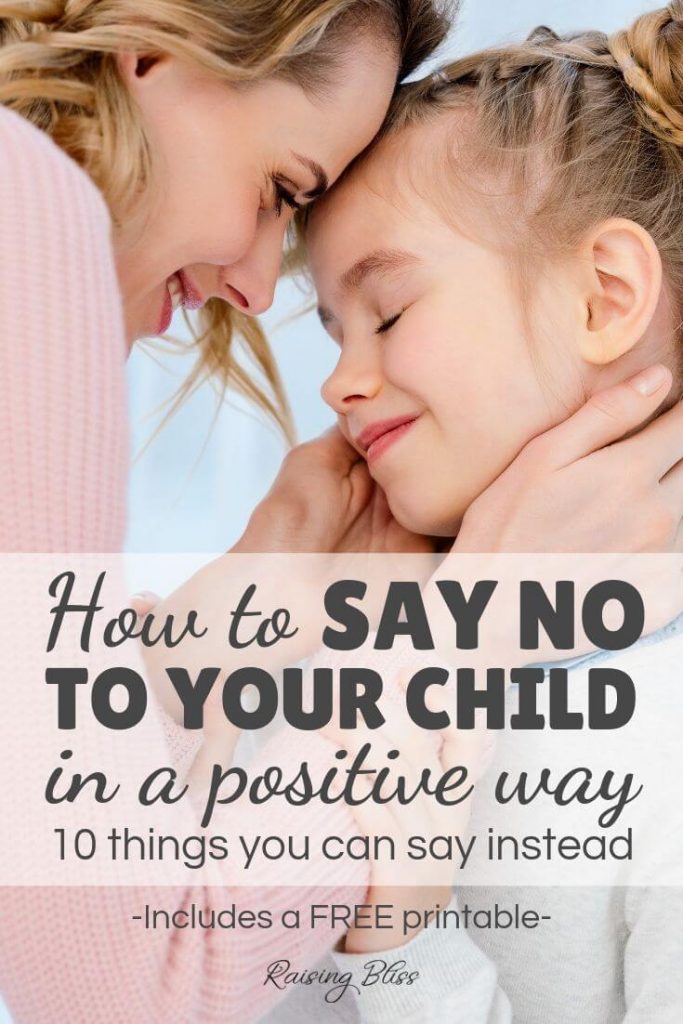
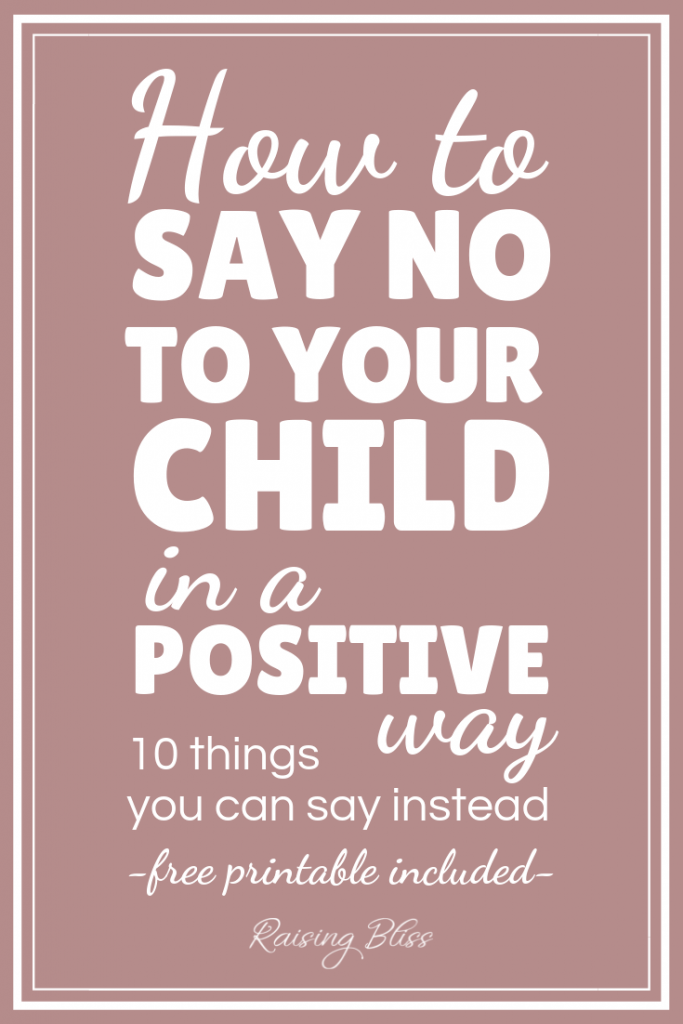
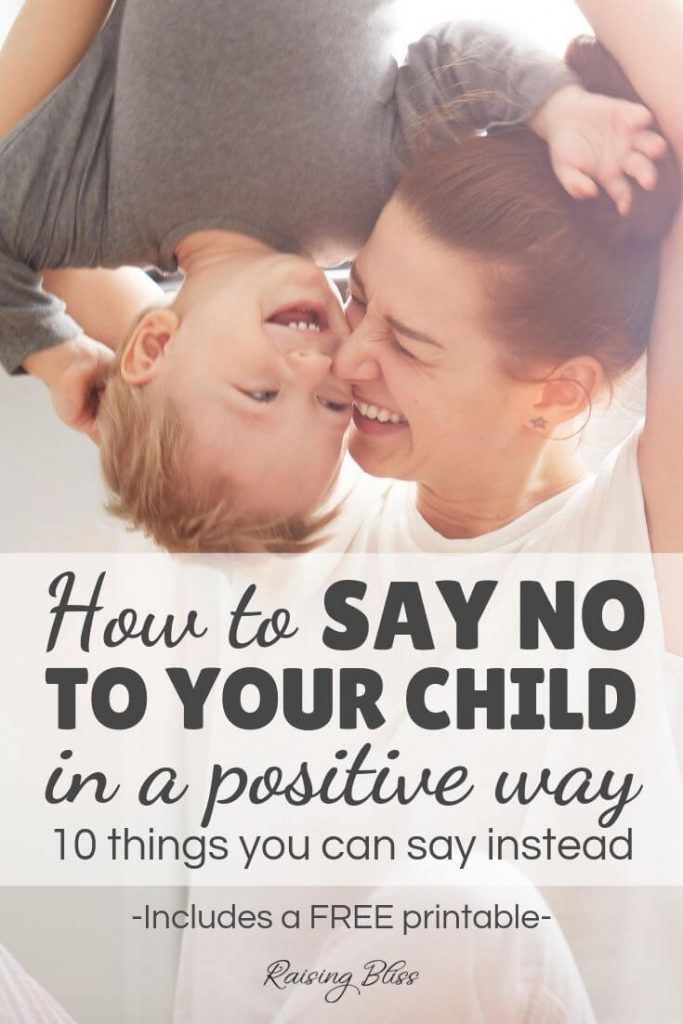
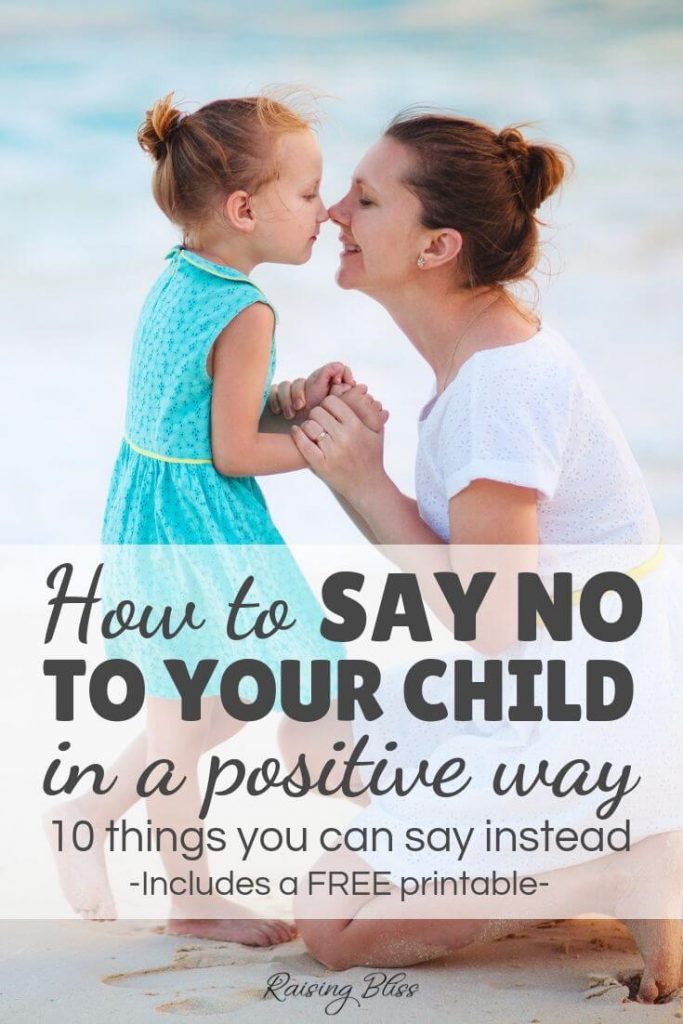

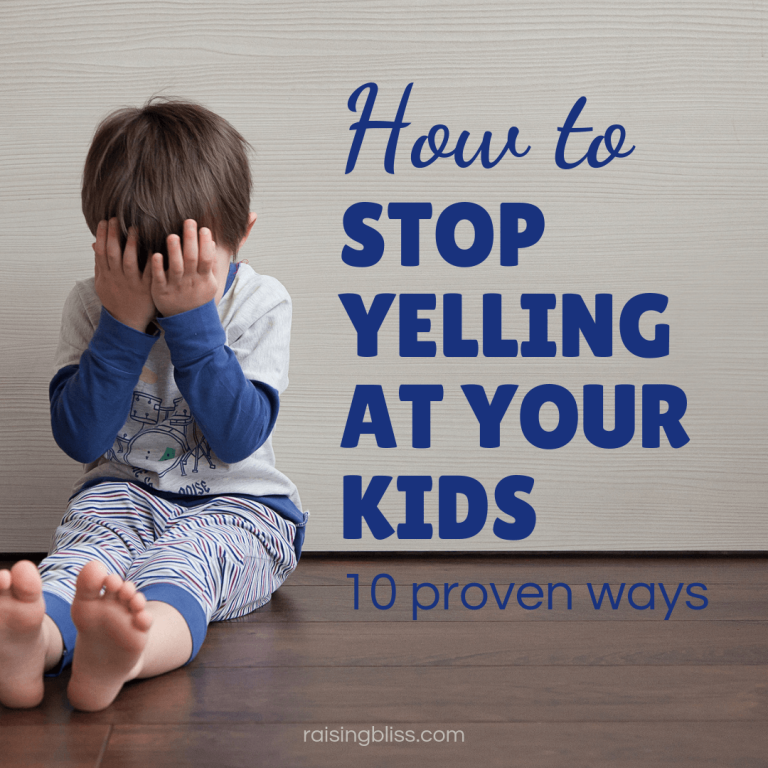
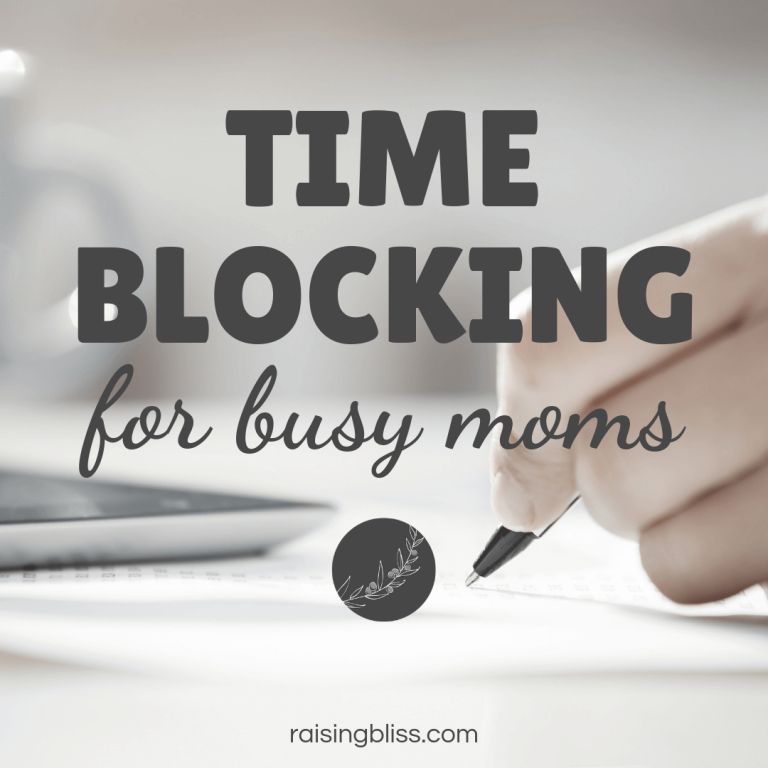

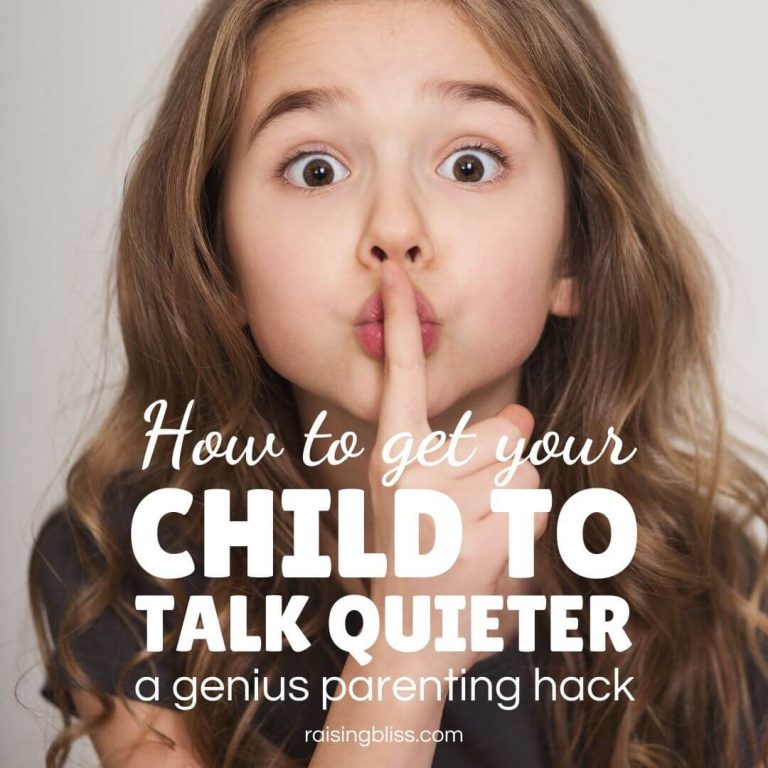

Thank you so much for this article!
We’ve been looking for more ways to implement positive parenting with our 4 year old, and this is mighty useful! Once we started positive reinforcing and teaching about natural consequences, his behaviour improved greatly!
We are still in the beginning of our journey, and I’m grateful for resources such as yours!
Hi Tere, I’m happy to hear this has helped! ❤️
This is a very good article i love to read this more and more.